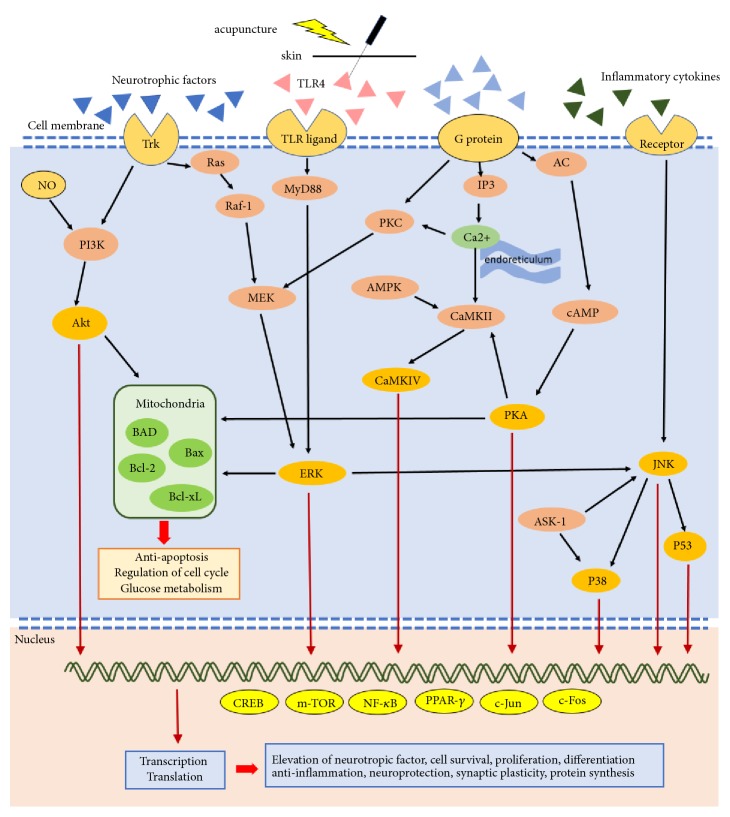Figure 2.
Summary of signal transduction pathways through which acupuncture treats nervous system diseases. Acupuncture is applied on acupoints and results in de qi, evoking excitation of cell membrane receptors, such as the Trk and TLR/ligand, and subsequently producing signal transduction. AC: adenyl cyclase; Akt: protein kinase B; AMPK: AMP-activated protein kinase; ASK-1: apoptosis signal-regulating kinase 1; Bad: Bcl-2-associated death promoter; Bax: Bcl-2 associated X; Bcl-2: B-cell lymphoma 2; Bcl2-xl: B-cell lymphoma-extralarge; CaMK: Ca2+/calmodulin-dependent protein kinase; cAMP: cyclic adenosine monophosphate; CREB: phosphorylated cyclic AMP response element-binding protein; ERK: extracellular signal-regulated kinase; IP3: inositol triphosphate; JNK: c-Jun N-terminal kinases; MEK: mitogen-activated protein kinase/extracellular signal-regulated kinase kinase; mTOR: mammalian target of rapamycin; MyD88: myeloid differentiation primary response 88; NF-κB: nuclear factor kappa-light-chain-enhancer of activated B cells; NO: nitric oxide; PI3K: phosphatidylinositol-4,5-bisphosphate 3-kinase; PKA: protein kinase A; PKC: protein kinase C; PPAR-γ: peroxisome proliferator-activated receptor γ; TLR: Toll-like receptor; Trk: tyrosine receptor kinase.

